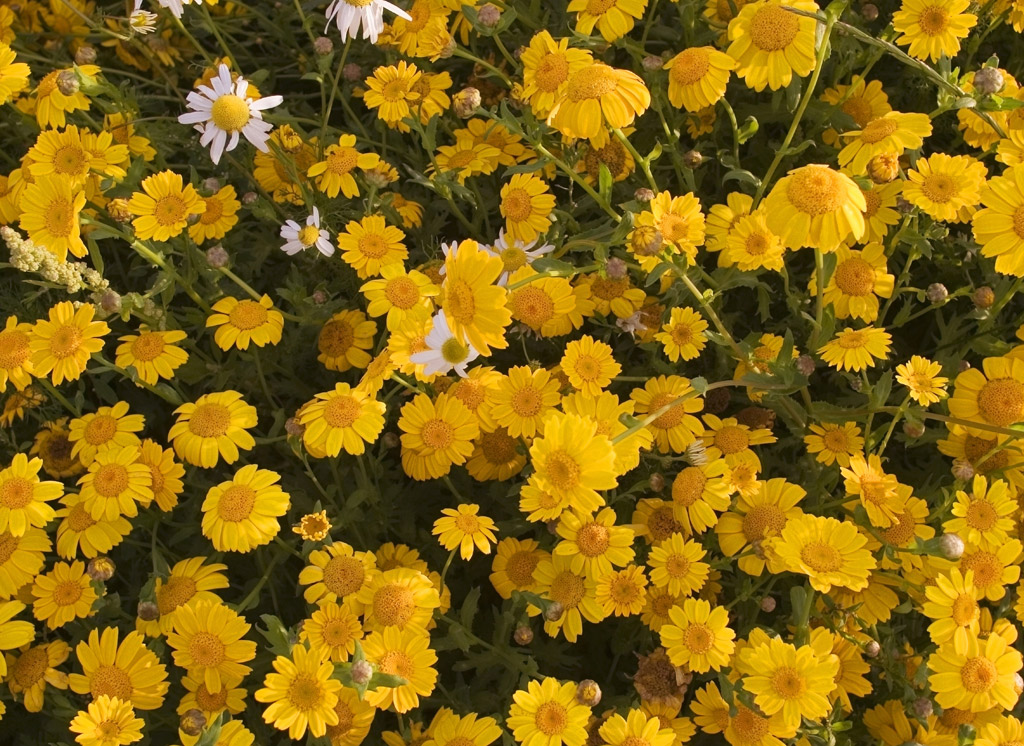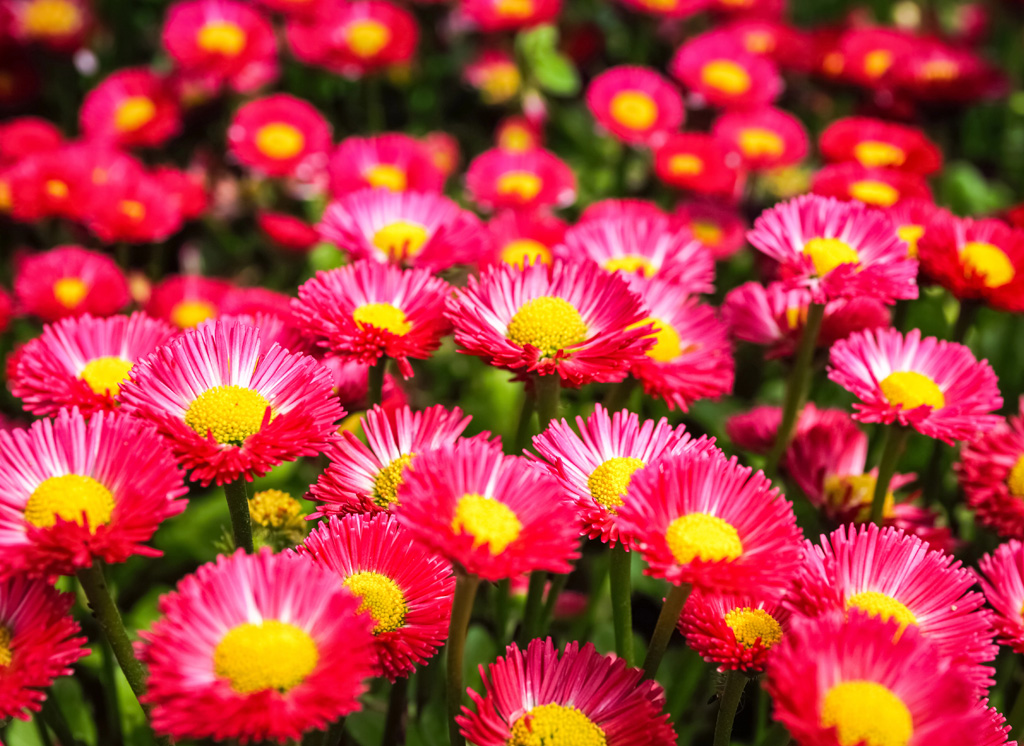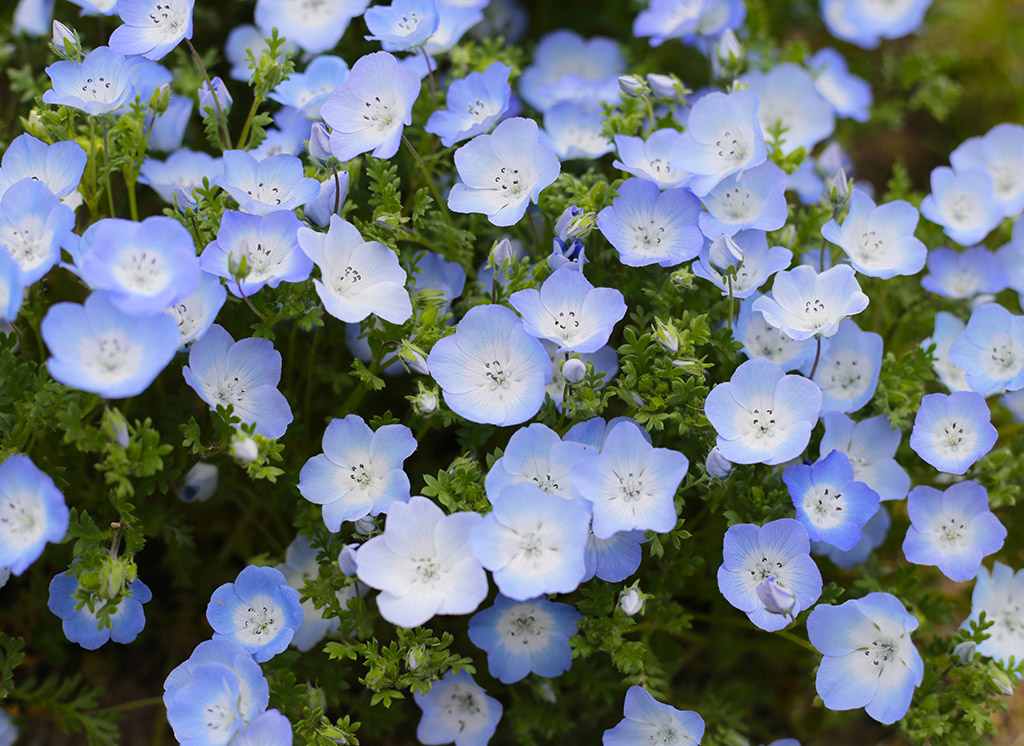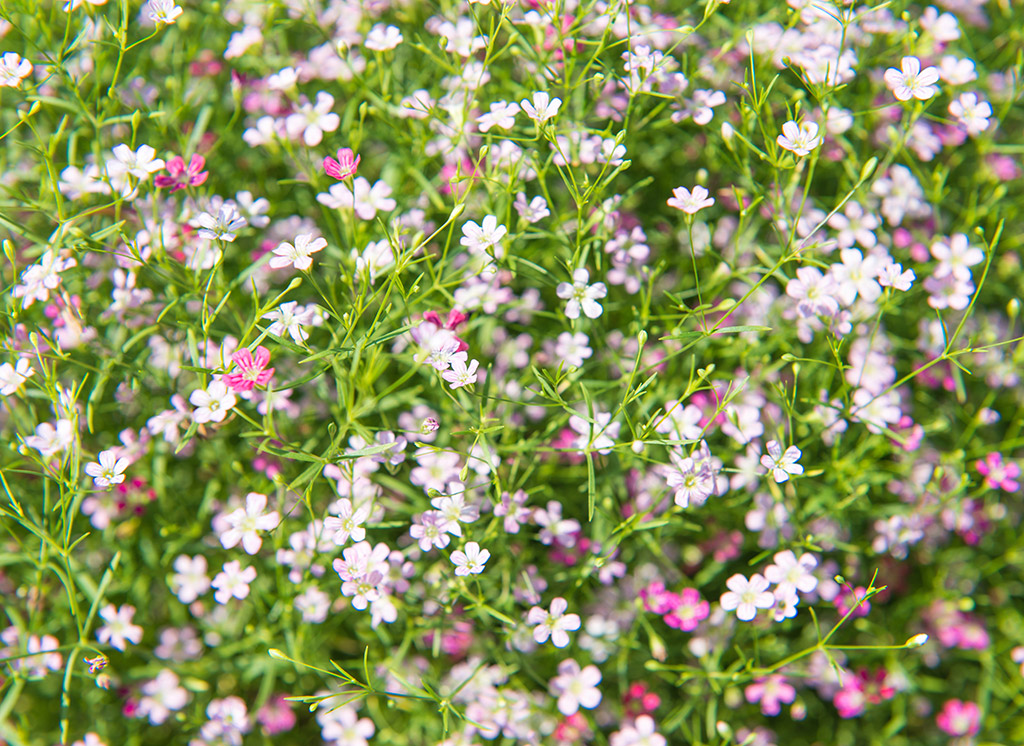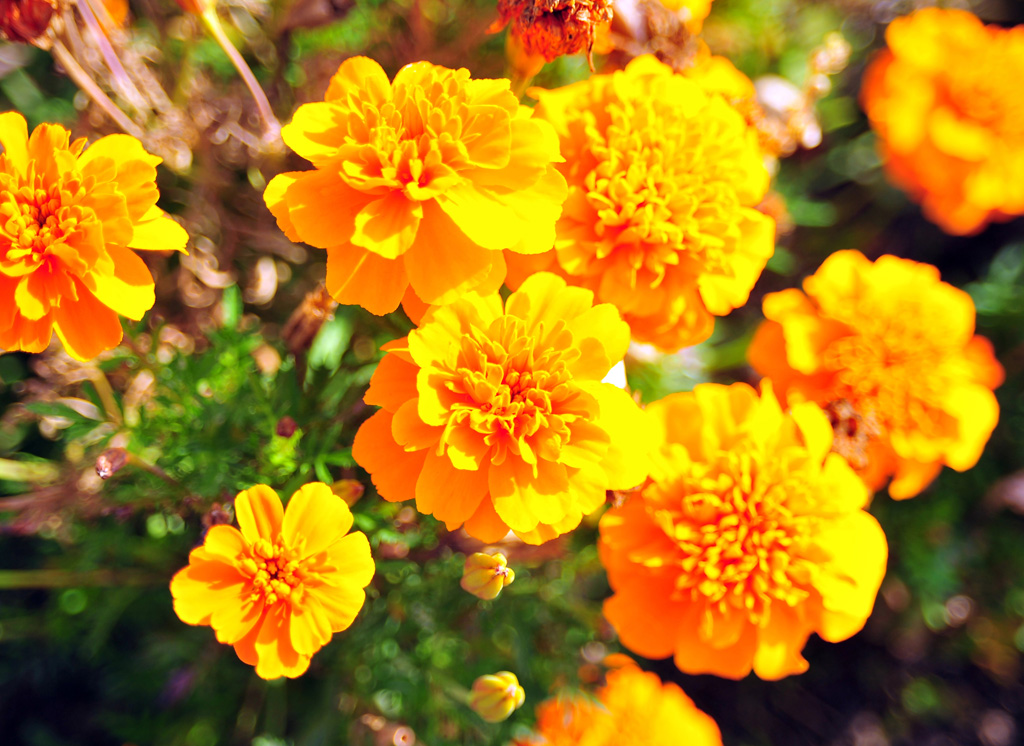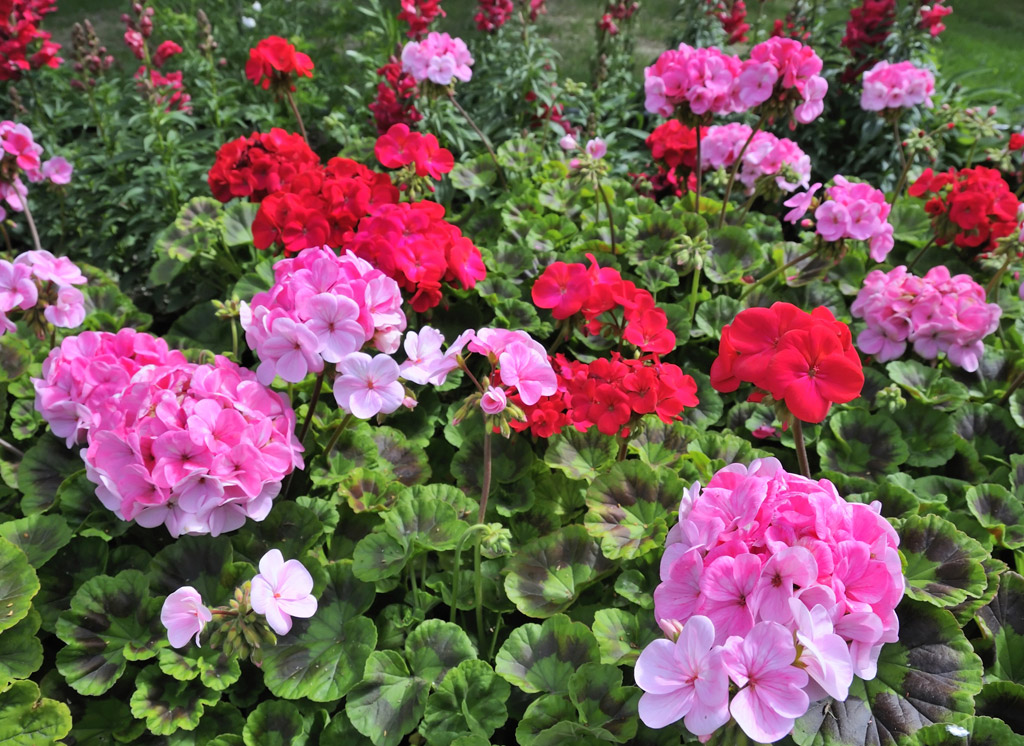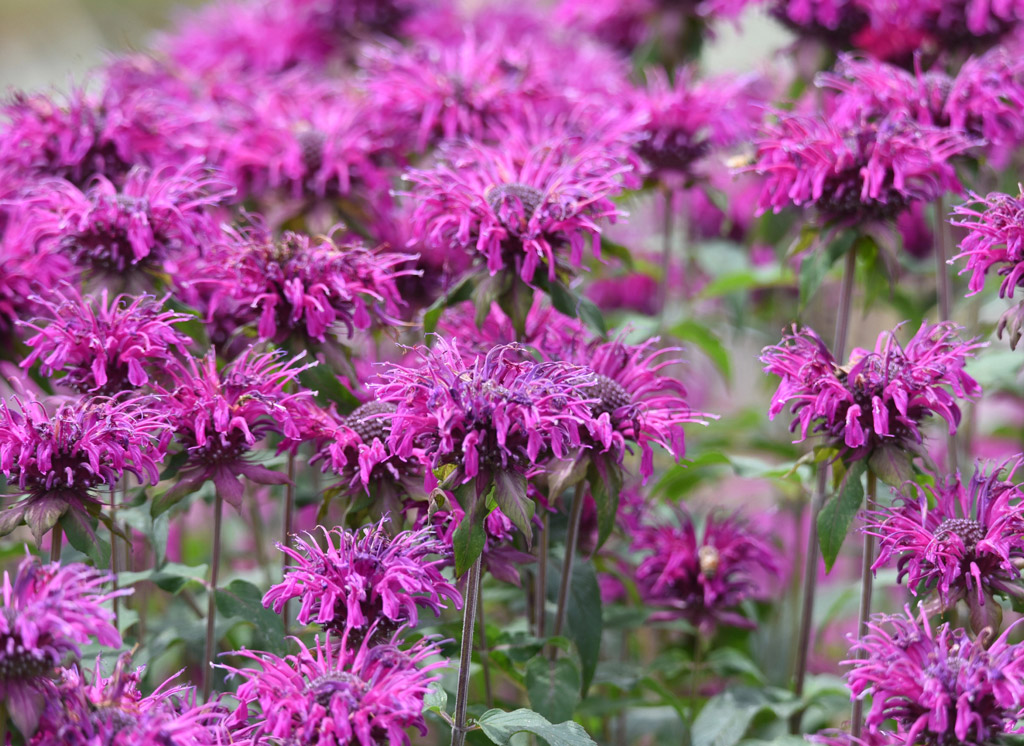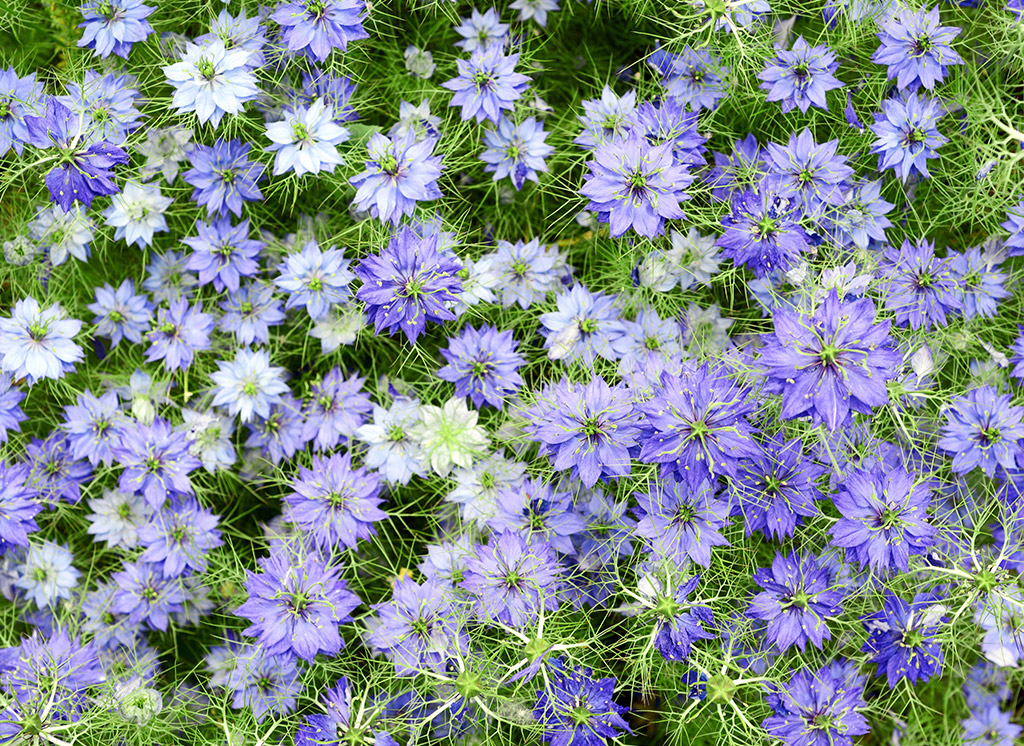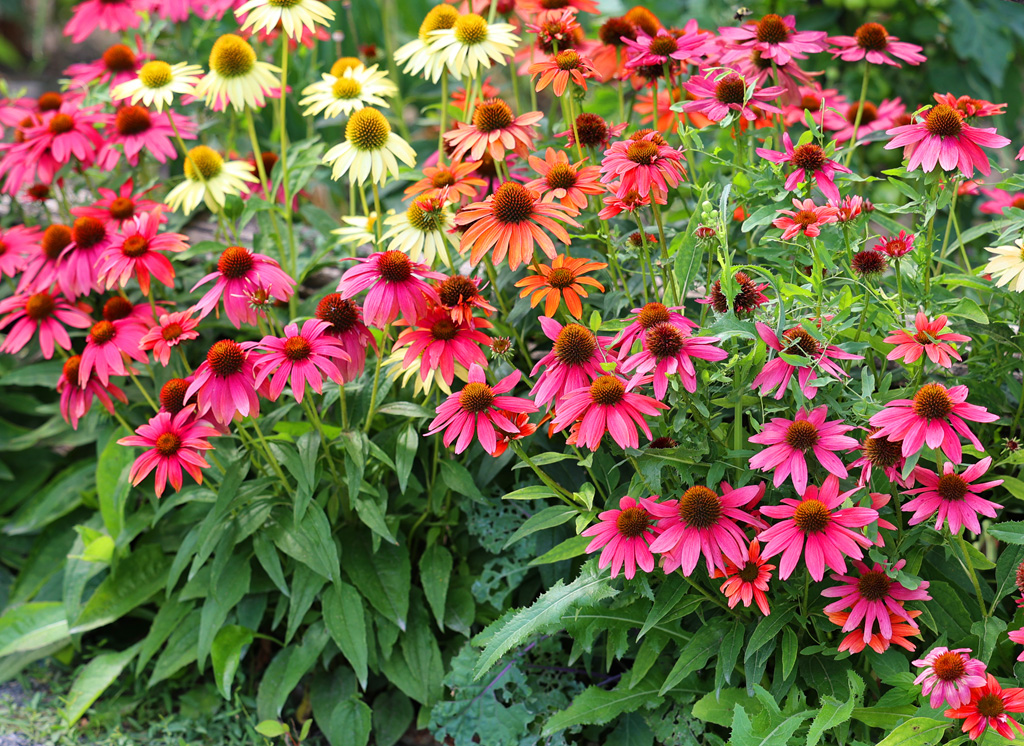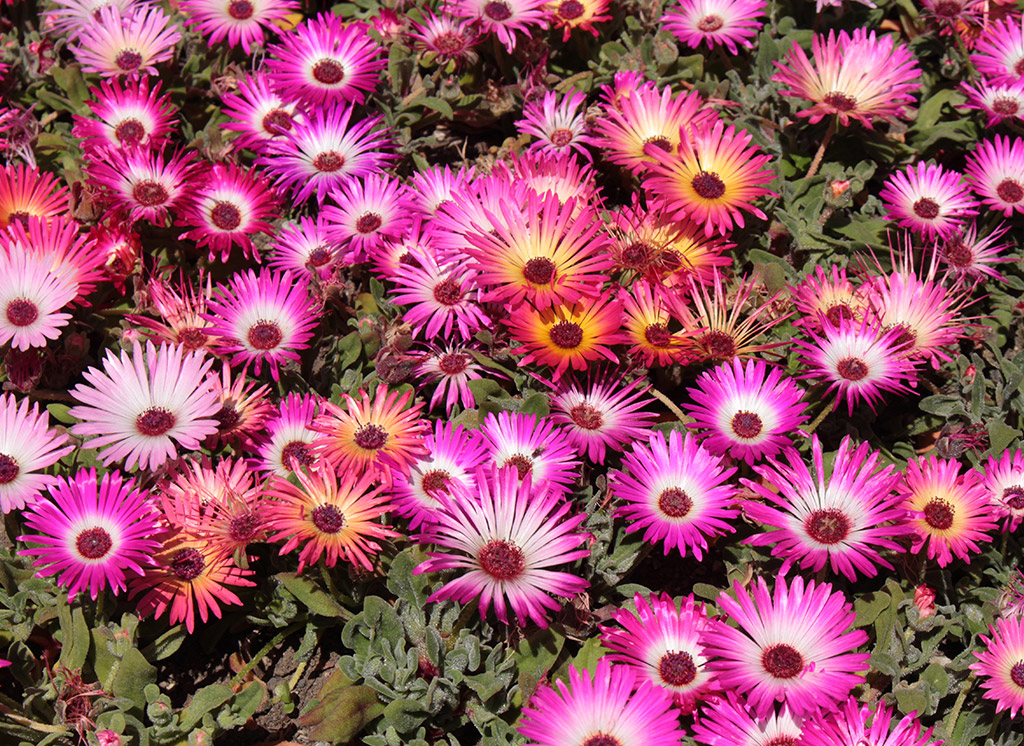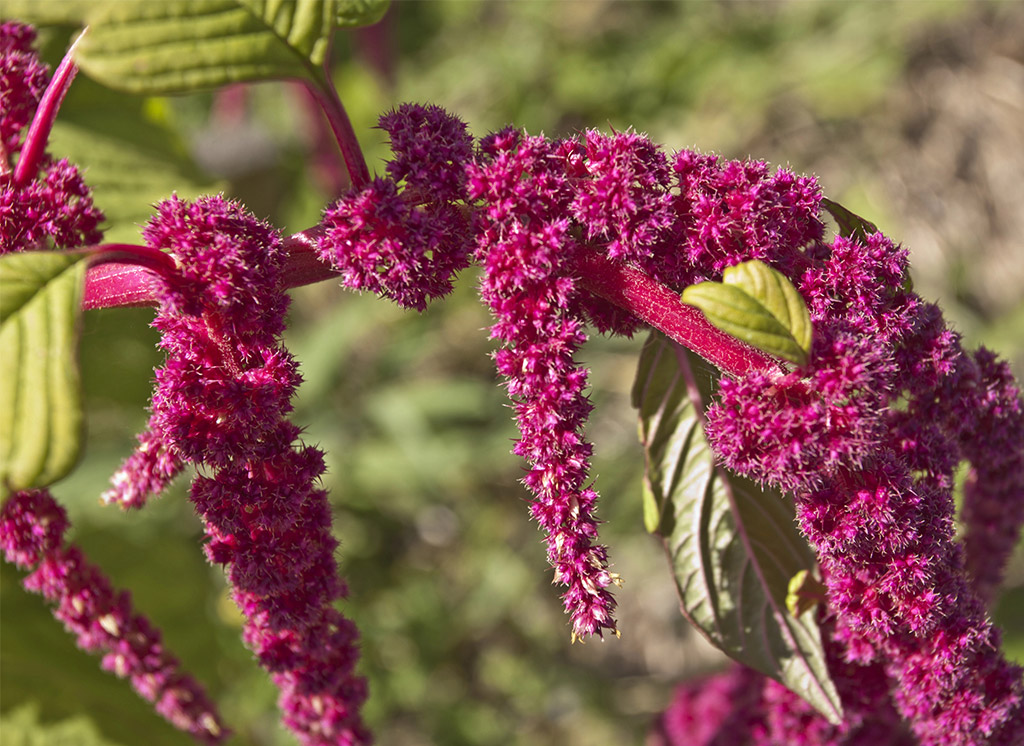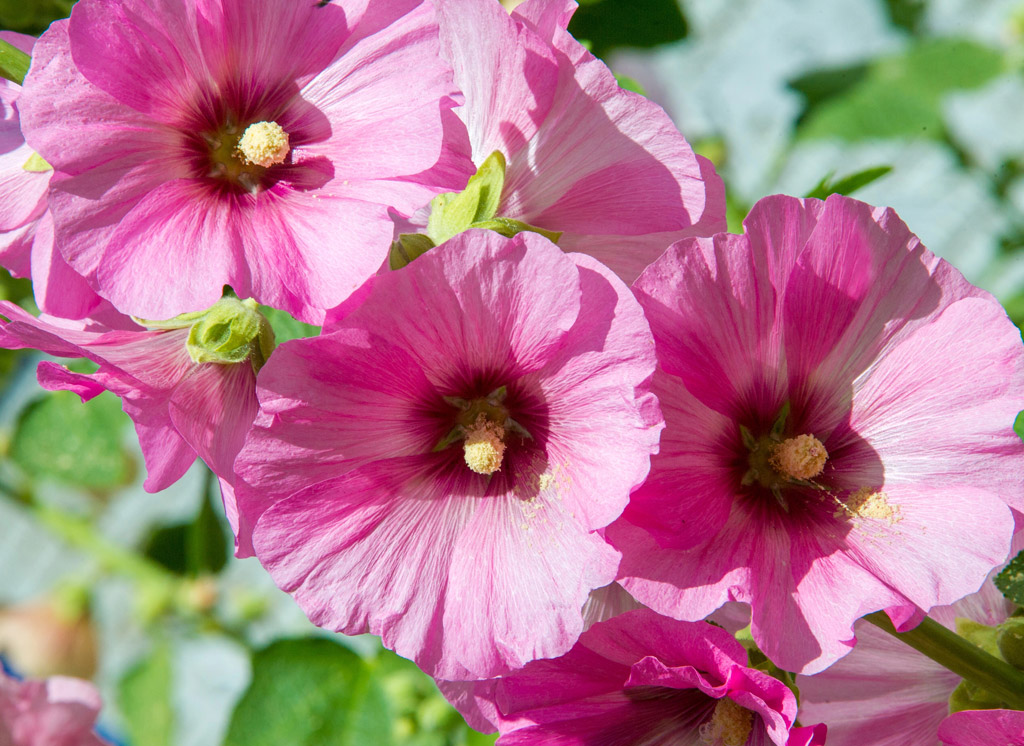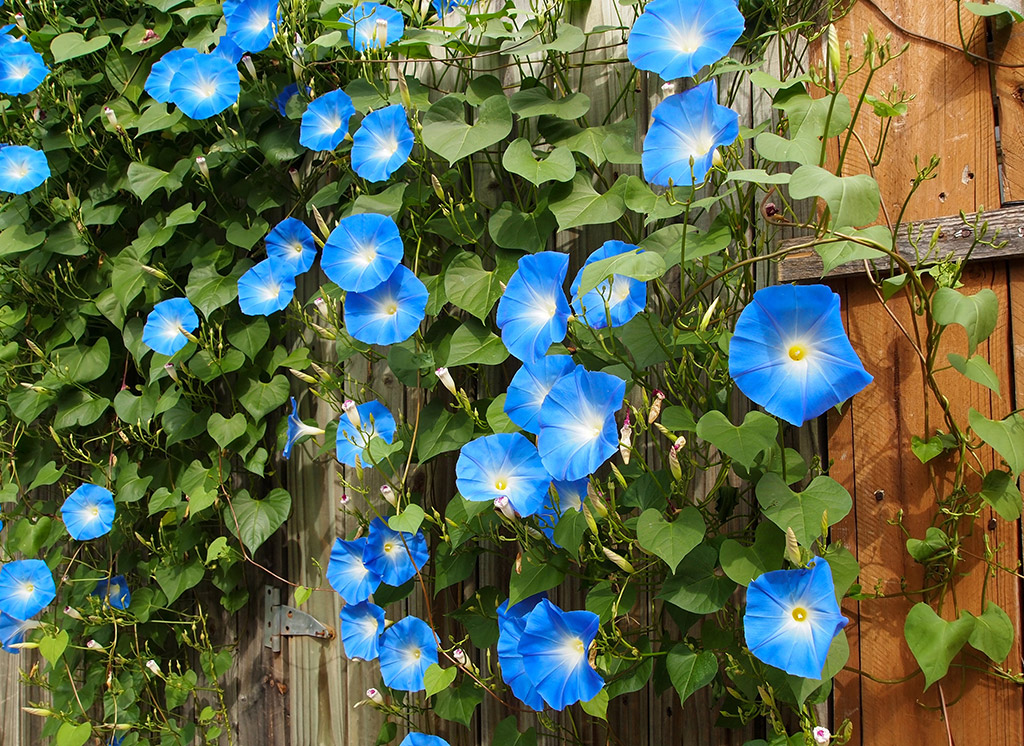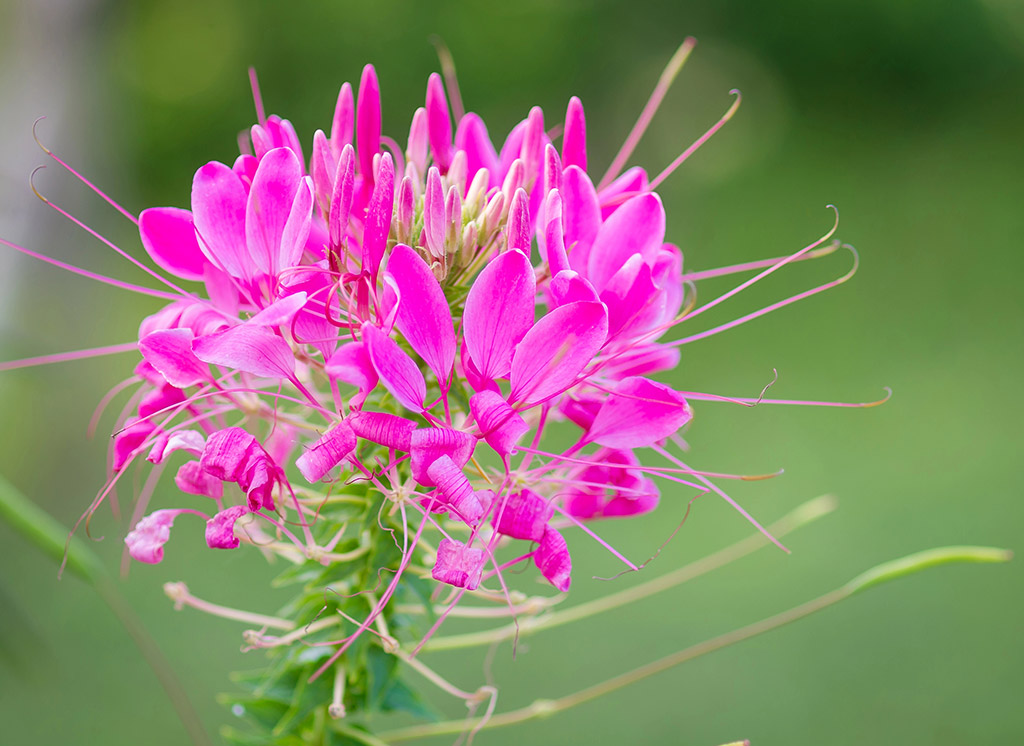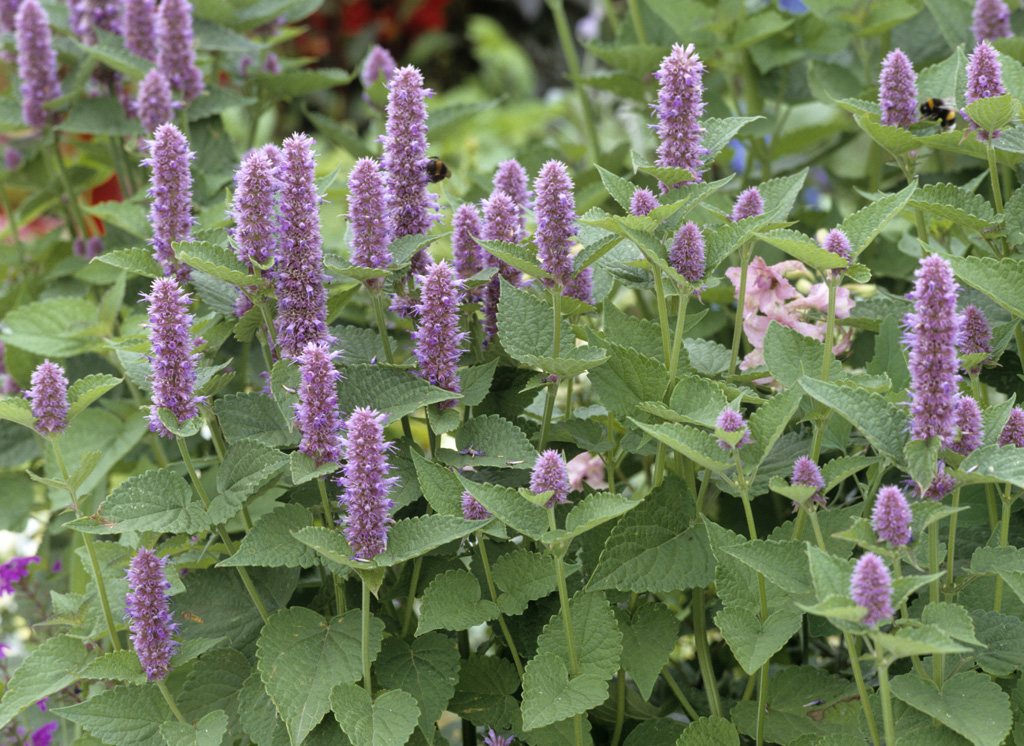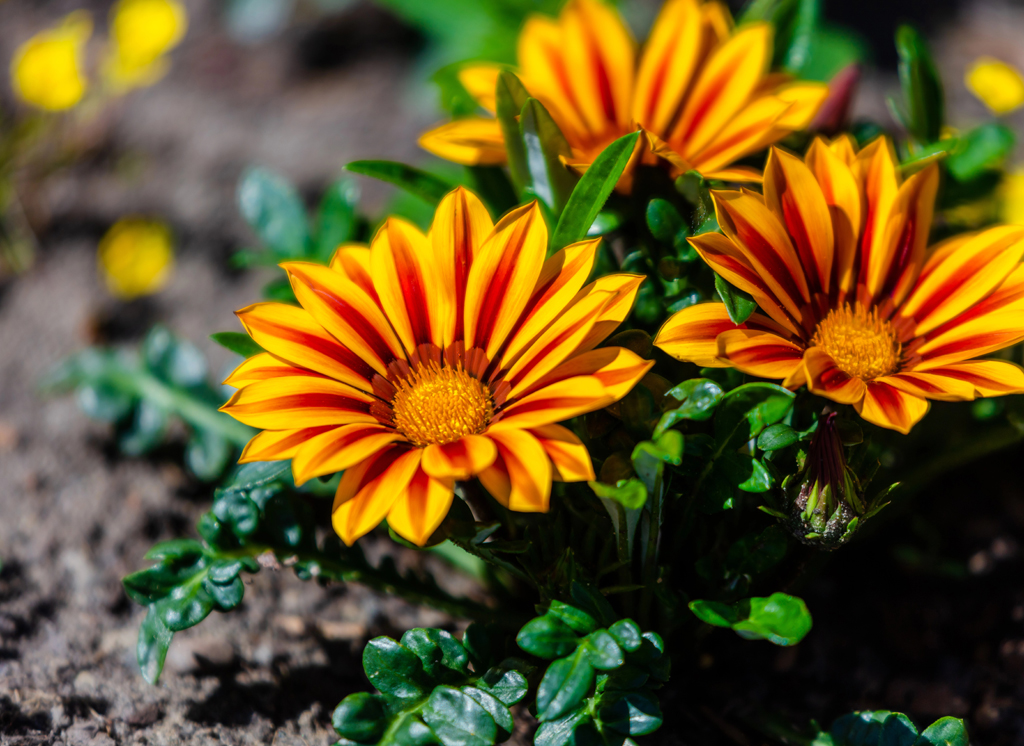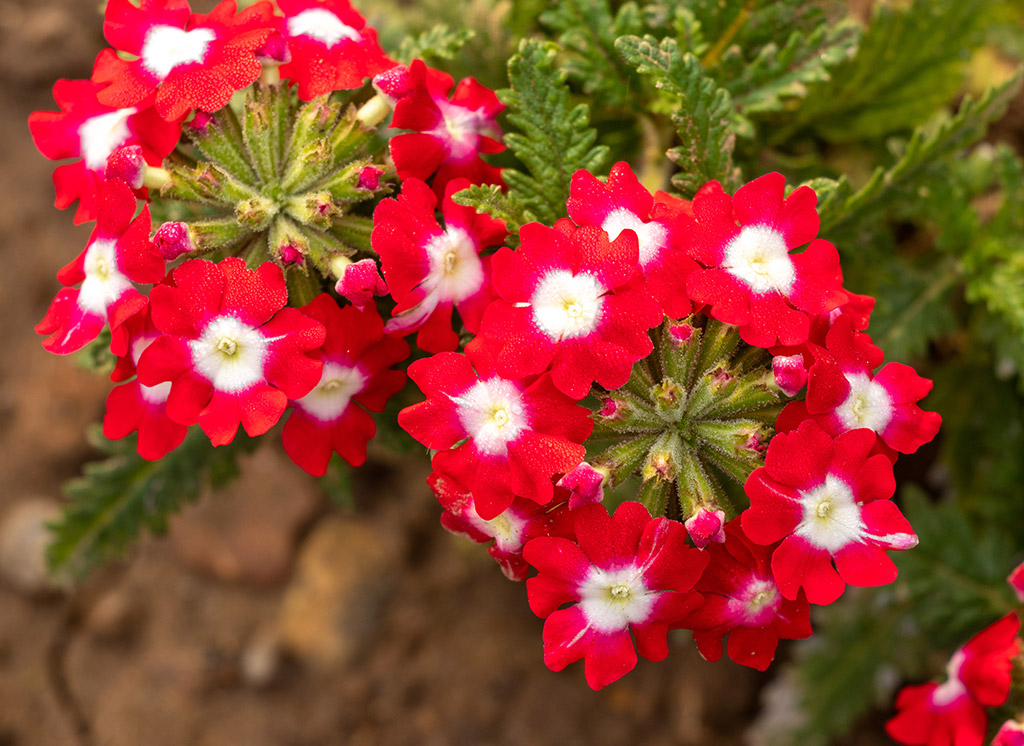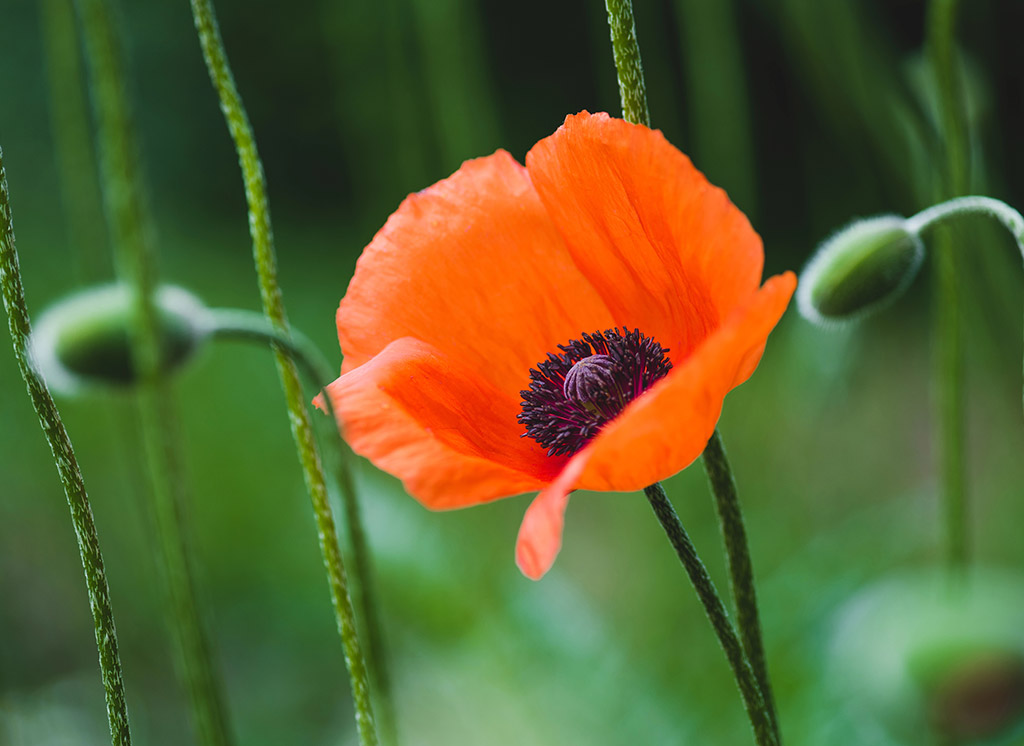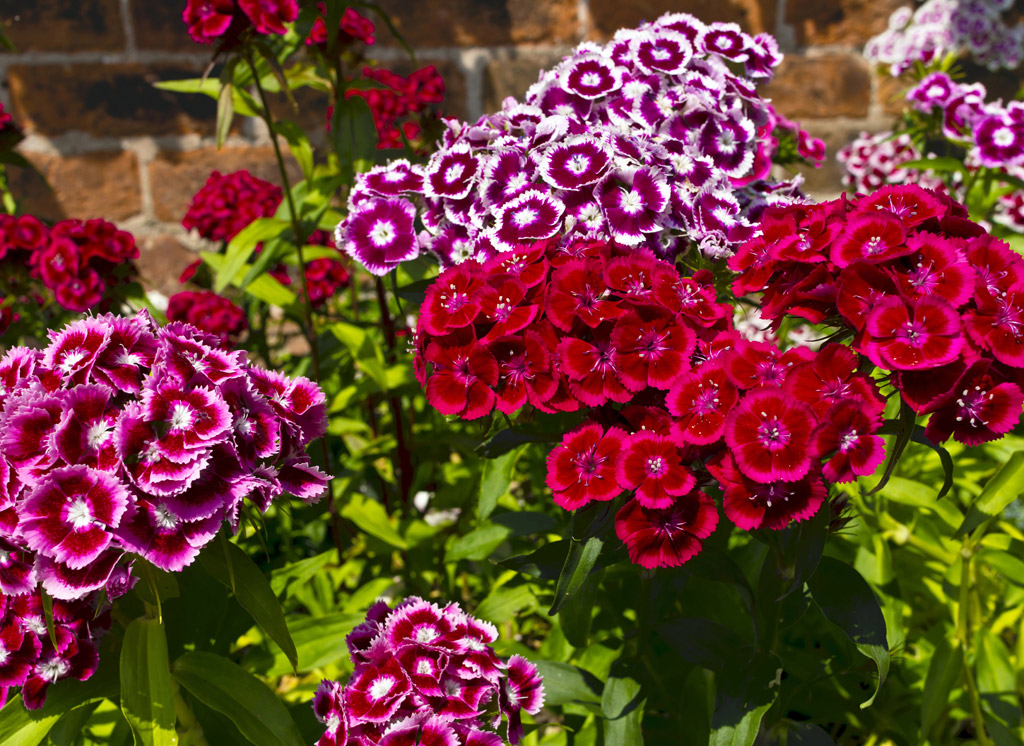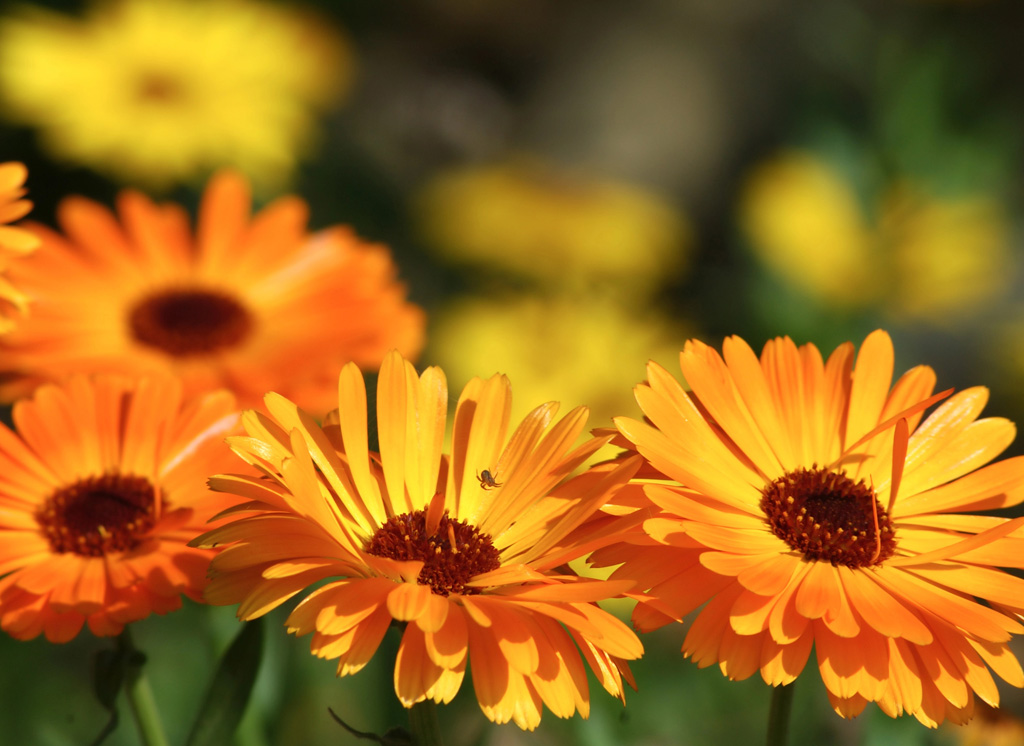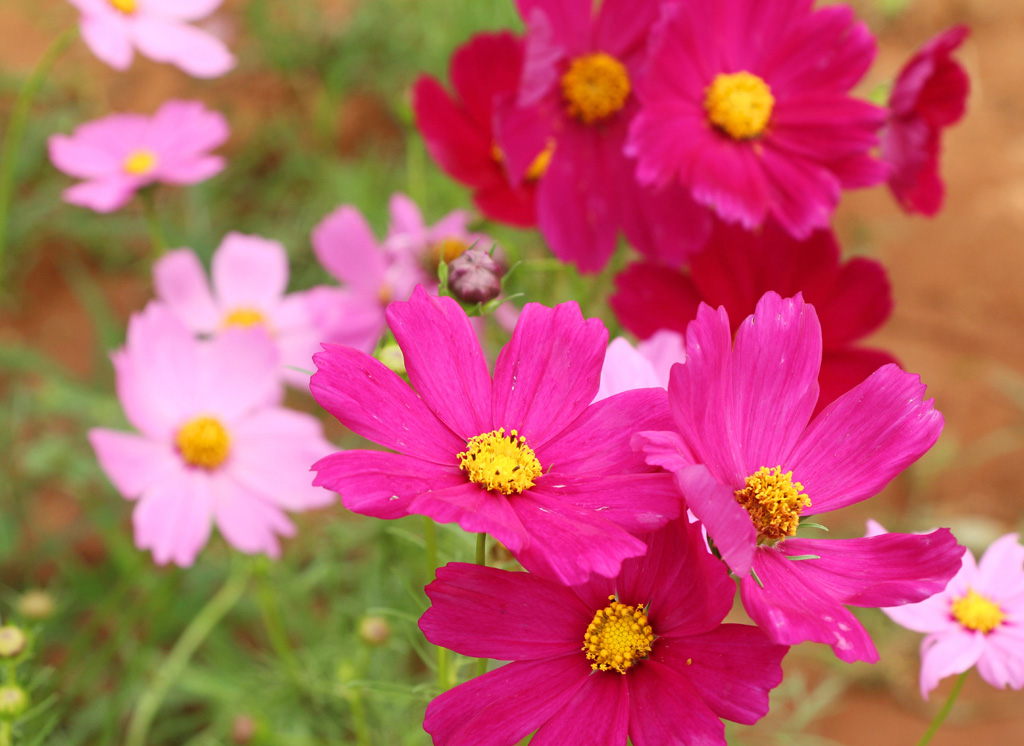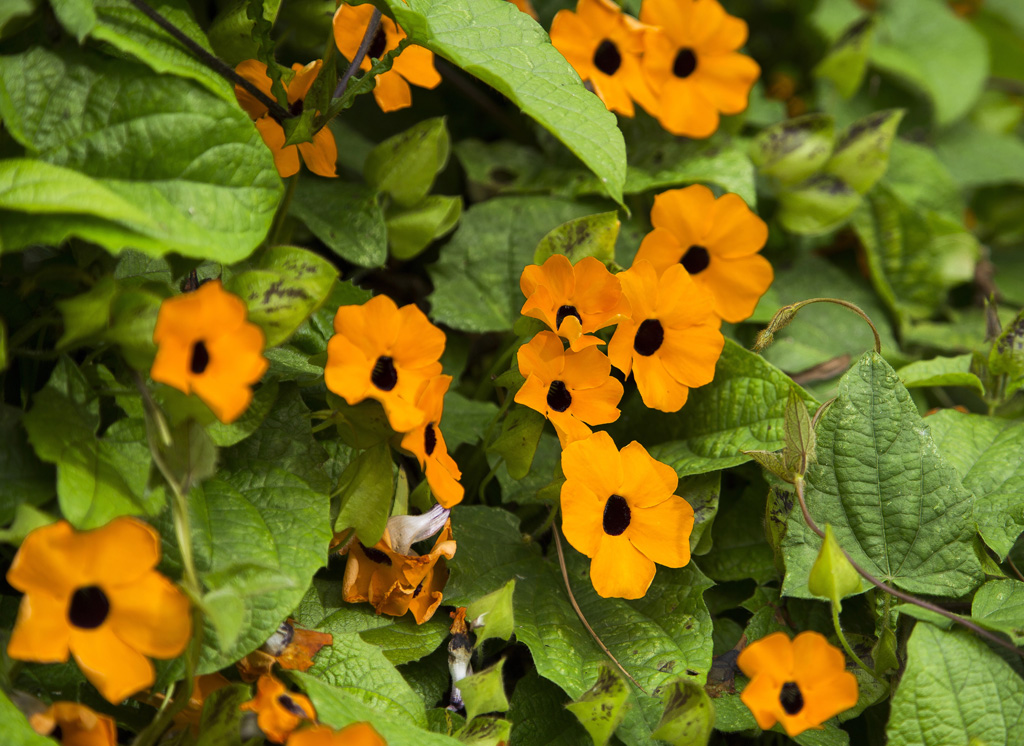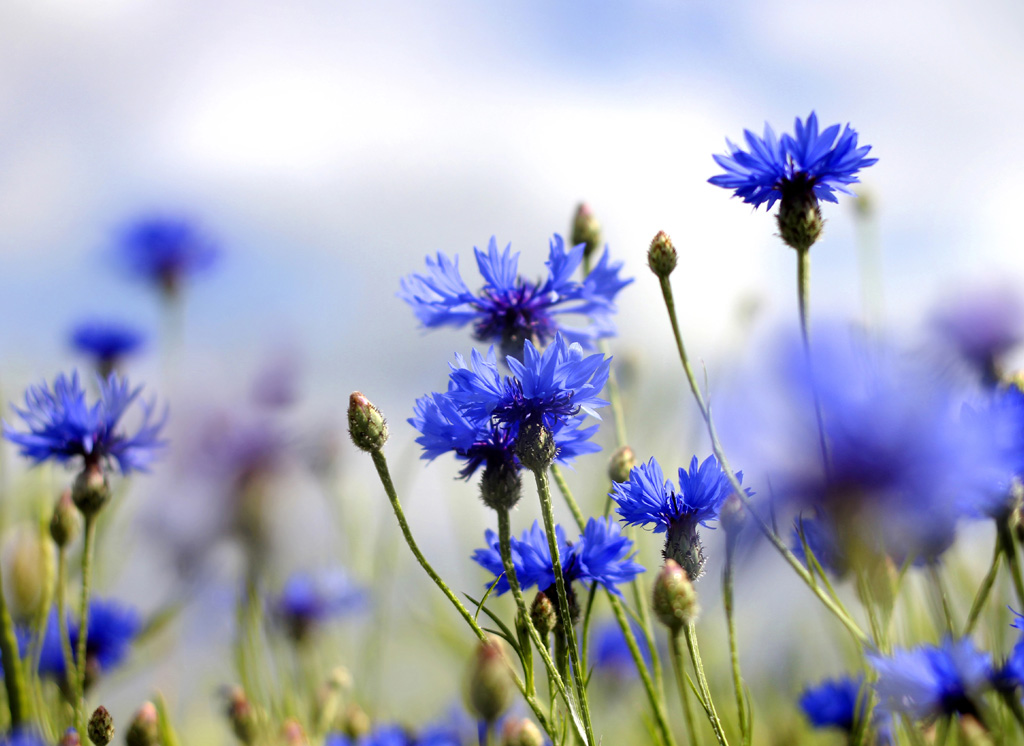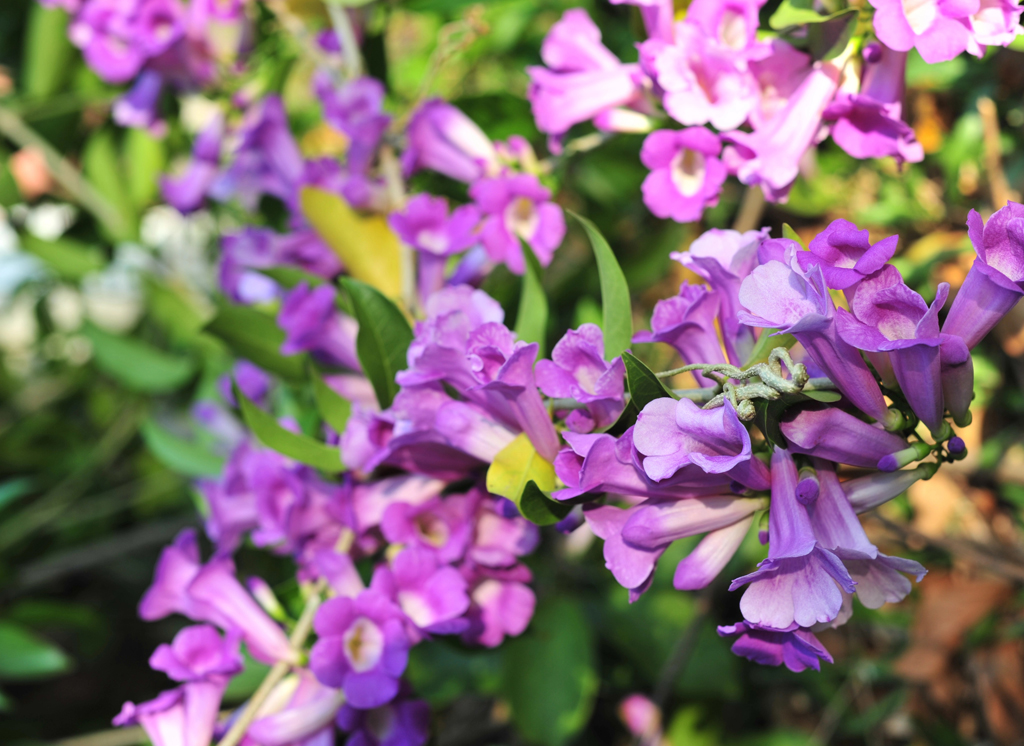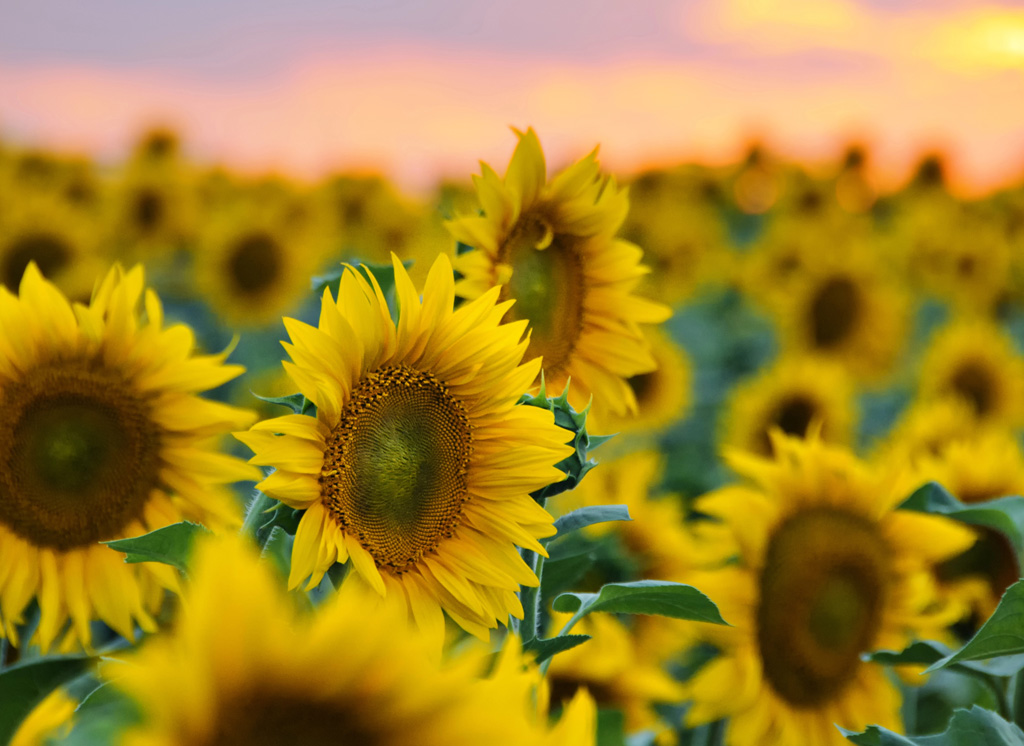How to grow flowers?
Growing and Sowing Aster
Asters come in both annual and perennial varieties and can easily be grown from seed. Annual Asters can be sown early in spring and flower far into autumn. Once they have died off, they normally do not come back. However, they may self-sow. Asters can be used as cut flowers and are available in many different colours.
Growing and Sowing Baby Blue Eyes
Baby Blue Eyes is a low-growing, annual flower species native to North America. The plant grows to about 20 cm high and is mainly wide-spreading, making it ideal as ground cover. Baby Blue Eyes blooms with blue flowers with a white centre and attracts pollinators, such as bees. The plant is also suitable for shady spots in the garden.
Growing and Sowing Baby's Breath
Baby’s Breath, also known as Gypsophila, is a plant belonging to the carnation family (Caryophyllaceae) is often used in bouquets. Gypsophila blooms with small, delicate white or pink flowers. It is a good source of food for pollinating insects and is also used as a garnish for dishes, such as cakes, and in traditional medicine.
Growing and Sowing California Poppy
California poppy (Eschscholzia californica) is basically a perennial, hardy plant, but our climate is too cold. That is why the plant is grown here as an annual. California poppy belongs to the Papaveraceae family and blooms with orange-yellow flowers, which open during the day and fold in the evening or when it rains.
Growing and sowing Corncockle
Corncockle (Agrostemma githago), also called common corn-cockle, corn-pink, and crown of the field, is an annual plant that originally grew in fields. However, modern agricultural methods have made it almost disappear. Nowadays this plant is widely grown as an ornamental plant and cut flower. The plant blooms with funnel-shaped, pinkish-purple flowers and, depending on the location and type, can grow to a height of about 20 cm to 100 cm. The seeds are poisonous.
Growing and Sowing French Marigold
The Tagetes, also known as African and French Marigold, is a low-growing, annual flower species. The plant does not originate, as the name suggests, from Africa, but from Central America and Mexico. Tagetes Erecta are known as African Marigolds, Tagetes Patula are called French Marigolds. Marigolds are often planted in ornamental gardens. The plants can be used in the vegetable garden as a natural defense against all kinds of pests. In addition, the flowers of the marigolds are edible and have a medicinal effect.
Growing and Sowing Geranium
This description refers to the Pelargonium geranium, a geranium species often used for balcony pots and containers. They belong to the Geraniaceae family. Pelargoniums originate from Namibia and South Africa and are frost-intolerant summer bloomers. This species of geranium is known for its large flower clusters and is an easy plant for in pots, balcony boxes or hanging baskets.
Growing and Sowing Larkspur
Larkspur (Delphinium) belongs to the buttercup family (ranunculacea) and is a beautiful, flowering plant. There are perennials as well as annual varieties. Depending on the species, the plants can reach a height of 40 to sometimes up to 180 cm. The flowers of the larkspur form on the long, straight stems and are blue, purple, white, yellow or pink in colour.
Growing and Sowing Love-in-a-Mist
The love-in-a-mist, Nigella damascena, is an annual plant with elegant flowers and lacy foliage. It owes its name to the fact that the flowers are somewhat hidden among the fine leaves. The seed pods are also attractive, balloon-shaped, and are used in dried flower arrangements. It is an annual plant, but it self-seeds easily provided the seed pods are not removed.
Growing and Sowing of Livingstone Daisy
The annual Livingstone Daisy, also known as iceplant, are colourful, low-growing bloomers from the Aizoaceae family (succulent family). Depending on the species, the Latin name is Dorotheanthus or Delosperma. The flowers only open when there is enough sunlight and close when it is cloudy or in the evening. These plants are ideal as ground cover and can withstand drought well. There are also perennial ice flowers.
Growing and Sowing of Love Lies Bleeding
The Love-Lies-Bleeding Amaranth (Amaranthus caudatus) is an annual ornamental plant known for its striking, long, hanging flower clusters that resemble thick “foxtail”.
Originally from South America, the plant can grow up to 1 meter (about 3 feet) tall. It has large leaves and blooms with long, gracefully drooping flower spikes, usually deep red, but sometimes green or cream-colored.
Love-Lies-Bleeding is a true eye-catcher in ornamental gardens and borders. In addition, it can be used as a cut flower or dried flower.
Growing and Sowing of Morning Glory
Morning glory, also known as Ipomoea, is an annual climbing plant known for its rapid growth and large, trumpet-shaped flowers. The flowers, which are often blue, purple, pink, or white, bloom for only one day. However, this plant produces new flowers every day. Morning glory is especially popular for its decorative value and for growing against fences or trellises to cover them.
Growing and Sowing Of Spider Flowers
Spider Flower, Cleome hassleriana or Cleome spinosa, is a popular garden plant known for its beautiful flowers. The plant is native to South America and is an annual in cold climates, but sometimes a perennial in tropical climates. The plant blooms with purple, pink and white flowers that have long stamens, making them look like spiders.
Growing and Sowing of Treasure Flower
Treasure Flower, also known as Gazania, is a colourful flower native to South Africa. It belongs to the Asteraceae family, just like sunflowers and daisies, for example. Treasure Flowers are sun worshippers and only open their flowers fully in bright sunlight. When cloudy, at night or if they are in a shady spot, they close their flowers.
Treasure Flower is very drought-resistant. This makes the plant very suitable for rock gardens, for example. Although it is a perennial plant, in the Netherlands it is grown as an annual. This is because the plant is not hardy.
Growing and Sowing of Verbena
Verbena, also known as vervain or verveine, is a strong, ornamental plant popular in gardens and borders. There are several varieties, each with its own characteristics. The
Verbena bonariensis, the purpletop vervain, is a tall plant that blooms from June to October with purple, small flowers in loose umbels. This species, which is very well known, attracts many bees and butterflies.
Verbena rigida or slender vervain is also a taller species with bright purple to blue-violet flowers, which are slightly larger than those of bonariensis. Verbena hastata, also called American vervain orblue vervain, can grow 80 to 2 metres tall and blooms with blue to purple flowers, in dense spikes. Verbena x hybrida, also called garden verbena, comes in different heights and colours. Verbena officinalis (medicinal vervain), which grows medium-sized and blooms with lavender-coloured flowers. This species is used in herbal medicine.
Growing and Sowing Poppy
The poppy is a plant that belongs to the Papaveraceae family. The most well-known is the red poppy (Papaver rhoeas), which often blooms in roadsides and fields. It is a herbaceous, mostly annual flower with striking blossoms. These flowers have thin, brightly coloured petals and are usually red. There are also other colours. They get their name because they grow on long stems, making it seem as if the petals clap in the wind. After flowering, beautiful seed pods remain, which are often dried for use in dried flower arrangements. These seed pods contain hundreds of tiny seeds.
Growing and Sowing Sweet William
Sweet William (Latin name: Dianthus barbatus) is a beautifully flowering plant with, depending on the variety, a lovely smell. The flowers grow like umbrellas on the stem. It is a somewhat old-fashioned plant that belongs to the genus carnations and originates from East Asia and Eastern Europe. There are annuals, but also biennial or perennial types. Most flowers of the Sweet William are pink, red, purple and white.
Sowing and Growing Cosmos
Cosmos, also known as Cosmea or Mexican aster , is a beautiful annual plant. The flower, which originates from Central America, does well in our climate and needs little care. Cosmos blooms mainly with white, red, bright and light pink flowers and is very suitable as a cut flower. Cosmos is also highly recommended for the kitchen garden. Besides flowering beautifully, the plant also attracts many pollinators.
Sowing and Growing Cowherb
Cowherb (Saponaria vaccaria or Saponaria officinalis), also known as soapwort, is an easy-to-grow, annual plant with soft pink or white flowers that can be used well in bouquets. This plant probably originates from central and southern Europe, but is now spread throughout Eurasia. Cowherb can also be found on roadsides, on fallow land and of course in gardens. It is an easy plant to grow that is resistant to drought. Also suitable for novice gardeners.
Sowing and growing Daisy
A daisy (Leucanthemum) is a perennial plant with white petals and a yellow heart. The daisy originates from Europe and is not only a common garden plant but also a popular flower for bouquets. The plant belongs to the composite family (Asteraceae) and symbolizes innocence, purity, love and simplicity. In addition to thedaisy, there are also other daisy species, such as the Mexican Daisy.
Sowing and Growing Flax
Flax (linum) is a plant from the flax family (linaceae). It is a plant that has been cultivated for thousands of years. Flax can be grown both for ornamental and for the fibres, which can be used to make linen, or for the seeds, which are used to make linseed. Flax flowers are usually light blue, purple, pink, red or white, and the plant can grow to a height of 30-90 cm. Flax can also be used as green manure, because of its dense root system that improves the soil structure and loosens the heavy soil.
Sowing and Growing of Poor Man's Orchid
The poor man's orchid, also known as Schizanthus, gets its name from the fact that its flowers resemble those of an orchid. This annual, up to 40 cm tall, blooms with pretty white, purple and pink flowers. It is a bedding plant belonging to the nightshade family. The colourful, cheerful plant is suitable for borders, but also does well in flower pots for the balcony or terrace.
Sowing and Growing Sunflowers
A sunflower (Helianthus) is an annual plant from the composite family (Asteraceae) and is known for its large, sun-following flowers. Originally from North and South America, the plant is now grown almost all over the world. The sunflower blooms with large, often yellow flowers, but there are also other colours. The seeds are edible and are used, among other things, for the production of sunflower oil.

